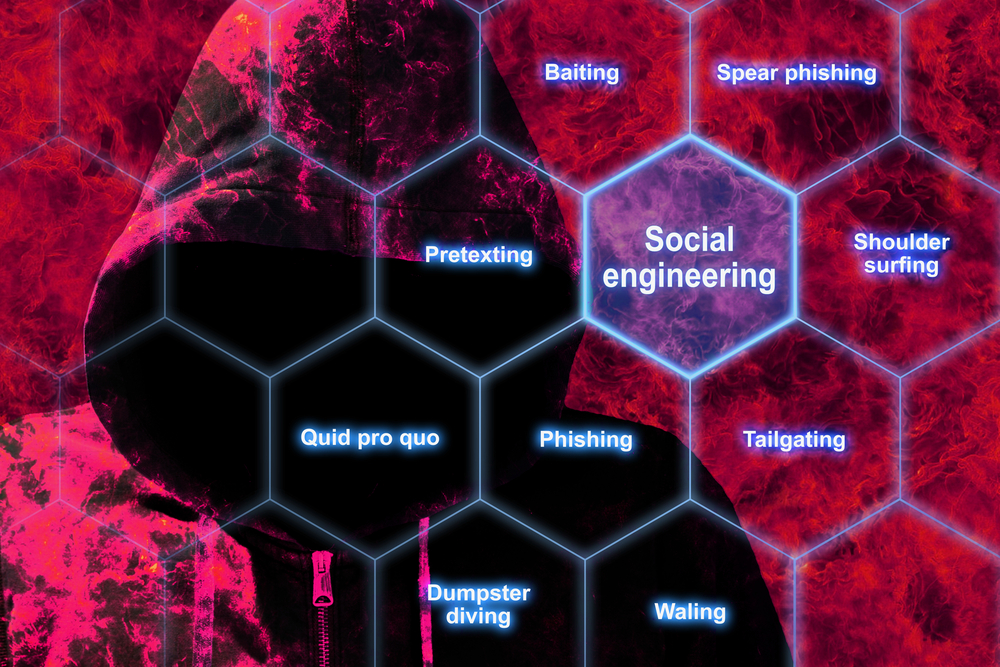Social Engineering Attacks: How to Recognize and Defend Against Manipulative Tactics

In today’s interconnected digital world, the threats to our online security are more varied and sophisticated than ever before. While technological advancements have provided us with numerous benefits, they’ve also given rise to a new breed of cyber threats, often hiding behind the guise of human interaction.
Social engineering attacks, such as phishing, pretexting, and baiting, have become increasingly prevalent and continue to pose a significant risk to our personal information, finances, and digital lives. Below, we examine the world of social engineering attacks, shedding light on their methods and offering practical advice on how to defend against these manipulative tactics.
Understanding Social Engineering
Social engineering is a form of cyberattack that relies on manipulating human psychology rather than exploiting software vulnerabilities. Attackers use various tactics to trick individuals into divulging sensitive information, clicking on malicious links, or performing actions that compromise their security. These tactics often exploit trust, curiosity, fear, or urgency to deceive victims.
Phishing: The Art of Deceptive Emails
Phishing is one of the most common and insidious social engineering techniques. It involves sending fraudulent emails that appear to be from a legitimate source, such as a bank, a government agency, or a popular online service. These emails often contain urgent requests for personal information, account credentials, or payment details.
To defend yourself against phishing, always scrutinize emails for suspicious signs, like misspellings, unusual sender addresses, or generic greetings. Avoid clicking on links in unsolicited emails, and verify the request’s legitimacy by contacting the organization directly through official channels.
Pretexting: Crafting False Scenarios
Pretexting involves creating a fabricated scenario to extract information or gain trust. Attackers may impersonate someone in authority or create a plausible pretext to manipulate individuals into sharing sensitive information or performing actions against their better judgment.
To stay safer, always verify the identity of anyone requesting personal or sensitive information, especially over the phone or through unfamiliar channels. Confirm the legitimacy of the request with the relevant organization or individual.
Baiting: Tempting with Malicious Offerings
Baiting involves enticing individuals with seemingly irresistible offers, such as free software downloads, movies, or music. These offers come with a hidden cost – malware or information theft. Victims unknowingly compromise their security in pursuit of a tempting prize.
To protect yourself, avoid using untrusted external devices or downloading files from suspicious sources. Always exercise caution when encountering offers that seem too good to be true.
Recognizing Social Engineering Red Flags
To defend against social engineering attacks, you must learn to recognize the red flags that may signal an attempt to manipulate you. These red flags often manifest in the form of behavioral patterns or tactics attackers use.
For example, attackers often create a sense of urgency or pressure to prompt hasty actions. Be cautious of requests that demand immediate responses or actions. Offers that appear too good to be true should also raise suspicions. Any request for personal information or credentials via email, phone, or in person should be cautiously approached, especially if it deviates from standard procedures. Plus, you must verify the consistency of information provided by the requester. Attackers may slip up with inconsistent details in their pretext.
Another red flag is emotional manipulation. Social engineers may appeal to emotions like fear, sympathy, or curiosity to cloud judgment and prompt compliance.
Practical Defenses Against Social Engineering Attacks
Now, let’s delve into practical defenses to help protect yourself and your personal information. Awareness is the first line of defense against social engineering attacks. Regularly educate yourself and your family members or colleagues about the risks and tactics involved. Encourage skepticism and the practice of verifying requests before complying with them.
Always confirm the identity of the person making a request, especially if it involves sharing sensitive information or performing actions that could compromise your security. Use official contact details obtained independently (e.g., from the organization’s website) to cross-check the legitimacy of requests.
Exercise extreme caution when clicking on links or downloading files from unverified sources. Hover over links to view the actual URL before clicking, and ensure your devices have up-to-date antivirus and anti-malware software installed. Also, protect your accounts with strong, unique passwords. Avoid using easily guessable information like birthdays or common phrases. Consider using a reputable password manager to generate and store complex passwords securely.Be sure to utilize comprehensive security software from www.trendmicro.com or a similar trusted source, and turn on the firewalls on your devices. Furthermore, enable two-factor authentication (2FA) for your online accounts whenever possible. This adds an extra layer of security, making it significantly harder for attackers to gain access to your accounts.
Social engineering attacks prey on human vulnerabilities, exploiting trust, curiosity, and fear to deceive individuals into compromising their security. However, by understanding the tactics employed, recognizing red flags, and adopting practical defenses, you can significantly reduce your risk of falling victim to these manipulative schemes.
Stay vigilant, verify requests, and educate yourself and others about the ever-present threat of social engineering in our digital age.


